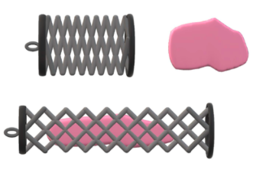Laparoscopic Specimen Retrieval Device
TECHNOLOGY NUMBER: 2022-028

OVERVIEW
A surgical device for retrieving laparoscopic specimens- Minimizes the risk for spillage with larger specimens
- Applicable to a variety of laparoscopic surgical procedures
BACKGROUND
Specimens are retrieved during a laparoscopic surgery by the use of specialized retrieval bags or devices that can securely isolate and contain the sample. Once the targeted tissue or organ is dissected using the laparoscopic tools, it is placed into the retrieval bag and drawn out of the body through one of the small incisions made in the patient’s abdomen. This approach reduces spillage of the specimen within the body cavity and maximizes efficiency of the retrieval. Still, the size of some specimens relative to the incision size can create challenges which require larger specimens to have to be morcellated, or fragmented, before removal. And, given that current specimen retrieval bags are relatively simple plastic bags, a risk exists for rupture and spillage of infected tissue or cancer cells, depending on the nature of the operation. As such, a need exists for an improved method to safely and efficiently retrieve specimens taken during laparoscopic surgical procedures.
INNOVATION
Inventors have created a device for improved specimen retrieval during minimally invasive surgery. The innovation involves use of a rupture-proof mesh bag that is specifically designed to apply longitudinal forces on a specimen to enable easy removal through a standard laparoscopic scope site. The goal of the device, called RETREVA, is to permit retrieval of larger or inconveniently shaped specimens without sacrificing sterility or oncologic integrity. The actionable polymer filament weave is controlled by two telescoping arms attached to two sliding and locking handles with a proximal pursestring closure. The design permits specimen retrieval without the need for wound extension, specimen morcellation, or excessive force that may cause bag rupture. The RETREVA is deployed through a standard 10 mm trocar into the working space following which the telescoping handles are depressed to deploy the mesh out of the sheath, the mesh is opened to load the specimen, and the specimen is loaded and removed. This innovation may be used for a variety of laparoscopic surgical procedures.